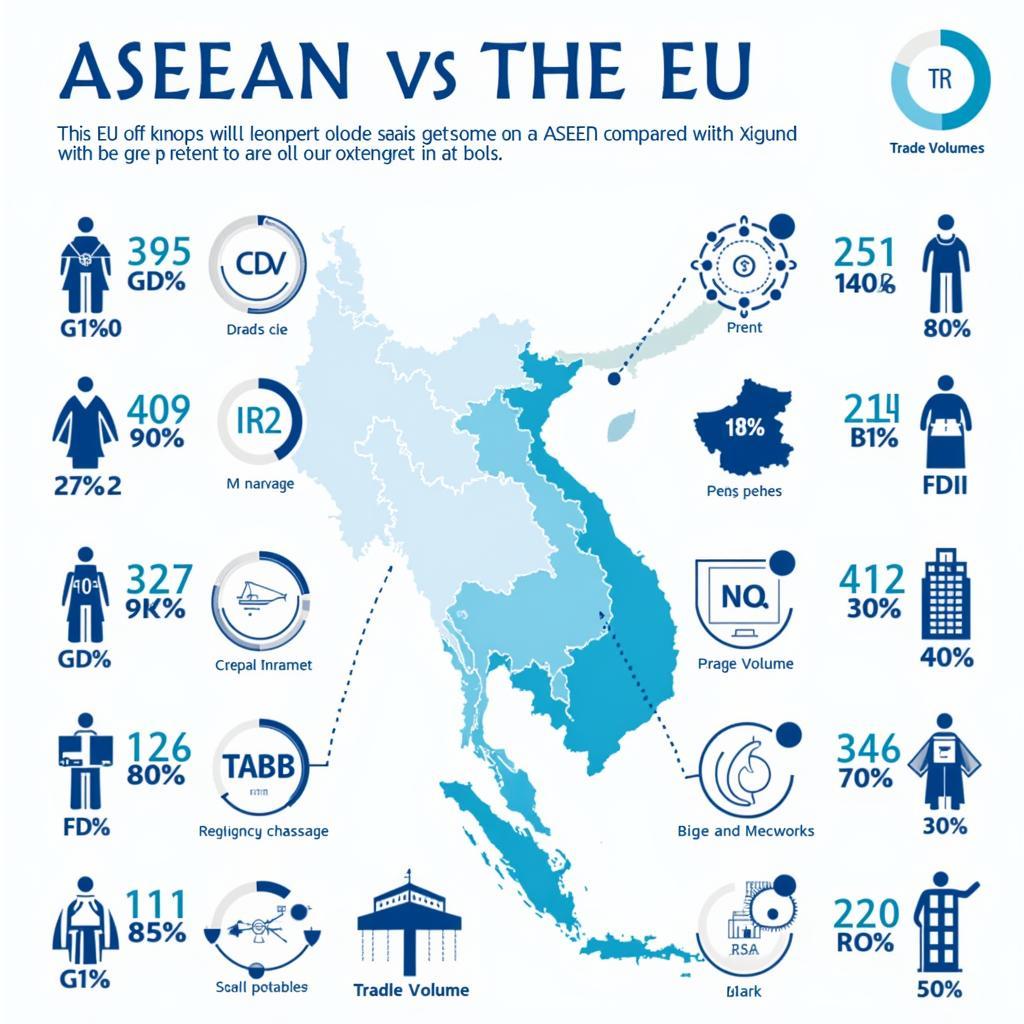ASEAN, a new EU? The question often arises when discussing Southeast Asia’s burgeoning economic and political integration. While comparisons are tempting, the reality is more nuanced. This article delves into the similarities and differences between these two regional blocs, examining their respective paths towards integration and the unique challenges they face.
Economic Integration: A Shared Goal, Different Approaches
Both ASEAN and the EU aim to foster economic growth and prosperity through regional cooperation. The EU, however, has achieved a significantly deeper level of economic integration, characterized by a single market and a common currency. ASEAN, with its diverse economies and varying levels of development, has adopted a more gradual approach. This involves reducing tariffs and non-tariff barriers, promoting trade facilitation, and encouraging cross-border investments. The ASEAN Economic Community (AEC) Blueprint 2025 outlines the vision for a highly integrated and cohesive economy, but significant challenges remain. For instance, harmonizing regulations and standards across ten diverse member states is a complex undertaking.
After this paragraph, we can see some of the early connections between ASEAN and historical architectural influences. More on this can be found at asean architects history.
Is ASEAN Truly Following the EU Model?
While ASEAN draws inspiration from the EU’s experience, it is not simply replicating the European model. ASEAN’s approach is shaped by its unique context, which includes a wide range of political systems, cultural traditions, and levels of economic development. This necessitates a more flexible and adaptable approach to integration, prioritizing consensus-building and respecting national sovereignty. This is evident in the ASEAN Way, which emphasizes non-interference in internal affairs and decision-making based on consultation and consensus.
 ASEAN and EU Economic Integration Compared
ASEAN and EU Economic Integration Compared
Political Cooperation: Navigating Complexities
Political cooperation is another key area of comparison between ASEAN and the EU. The EU has a more developed political structure, with a directly elected parliament and a supranational legal framework. ASEAN, on the other hand, operates on the principle of intergovernmentalism, with decisions made through consensus among member states. While ASEAN has made strides in promoting regional peace and security, its mechanisms for resolving disputes and addressing regional challenges are still evolving. The South China Sea issue, for example, highlights the complexities of managing competing interests within the bloc.
More about the presence of ASEAN in the United States can be seen here: aseada new york.
Challenges and Opportunities for ASEAN’s Political Future
ASEAN faces numerous challenges in strengthening political cooperation, including differing political systems, varying levels of commitment to regional integration, and the influence of external powers. However, the bloc also has significant opportunities to enhance its role in regional and global affairs. By fostering greater trust and cooperation among its members, ASEAN can become a more effective platform for addressing shared challenges and promoting regional stability.
Can ASEAN Become “A New EU”? The Verdict
The question of whether ASEAN can become “a new EU” is not a simple yes or no answer. While ASEAN shares some similarities with the EU in its pursuit of regional integration, it is charting its own course. This path is shaped by the region’s unique characteristics and the evolving geopolitical landscape. ASEAN’s success will depend on its ability to overcome internal challenges, build stronger institutions, and effectively manage its relationships with external partners.
You might be interested in this page on ASE deals and lifts: ase deals lifts.
The Future of ASEAN: A Region on the Rise
Despite the challenges, ASEAN remains a dynamic and promising region. Its growing economic clout, youthful population, and strategic location make it a key player in the global arena. While the path towards deeper integration may be long and arduous, ASEAN has the potential to become a major force in the 21st century. The future of ASEAN is not about becoming “a new EU,” but rather about forging its own unique identity and fulfilling its potential as a vibrant and prosperous region.
Dr. Anya Sharma, Southeast Asian Studies expert at the National University of Singapore: “ASEAN’s strength lies in its diversity. While this presents challenges for integration, it also creates opportunities for innovation and growth.”
Professor Michael Tan, Political Science Professor at Chulalongkorn University, Bangkok: “ASEAN must find its own model of regionalism, one that reflects the region’s unique history and cultural values.”
Conclusion
ASEAN, a new EU? The comparison offers valuable insights, but it’s crucial to recognize the distinct paths these blocs are traversing. ASEAN’s journey is about crafting its own future, a future rooted in Southeast Asian values and aspirations. The potential for growth and influence is undeniable, and as ASEAN continues to evolve, its unique model of regionalism will undoubtedly shape the global landscape.
FAQ
- What is the ASEAN Way?
- What are the main goals of the ASEAN Economic Community?
- How does ASEAN address regional security challenges?
- What are the key differences between ASEAN and the EU?
- What is the role of external powers in ASEAN’s development?
- How does ASEAN promote cultural exchange among its members?
- What are the future prospects for ASEAN integration?
Need more information about “ase selvstændig login”? Check out this resource: ase selvstændig login.
For further reading on ASE amphibious vehicles, visit: ase amphibiou.
When you need assistance, please contact us: Phone: 0369020373, Email: [email protected] or visit our office at: Ngoc Lien Village, Hiep Hoa, Bac Giang, Vietnam. Our customer service team is available 24/7.